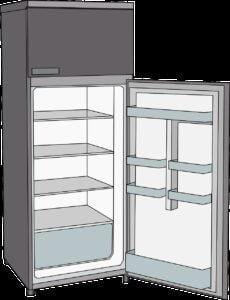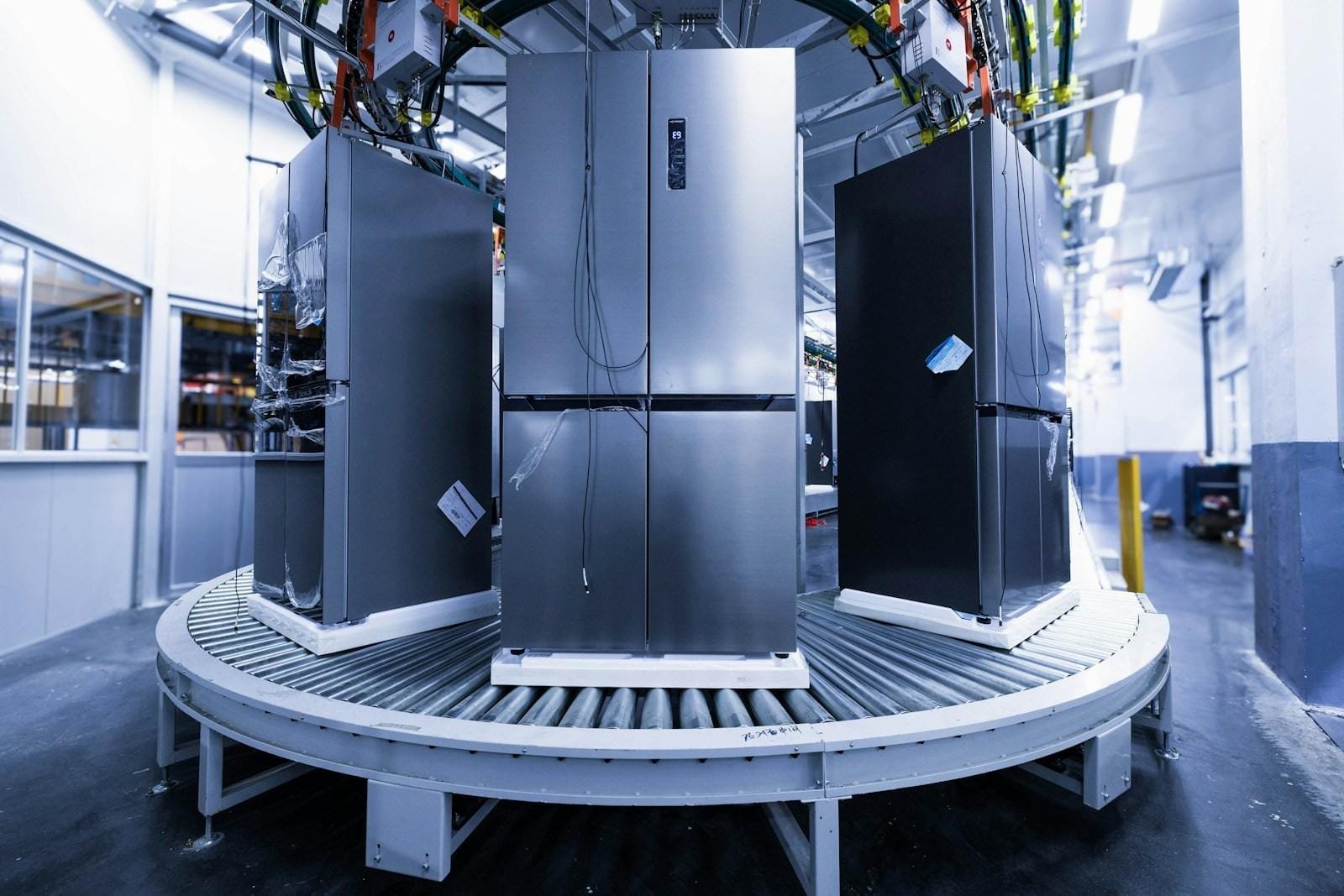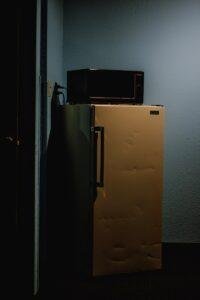How To Fix Refrigerator Compressor: A Step by Step Guide

For Appliance Repairs: Call 1-866-448-4331
or 1-850-950-9320
For HVAC Repairs: Call 1-202-883-8365
What is a Refrigerator Compressor
A fridge compressor is the engine of the refrigeration process, it circulates the refrigerant around the system. Essentially it compresses the refrigerant gas and pushes it through the coils in the fridge. This starts the cooling cycle by raising the pressure and temperature of the refrigerant, it then releases the heat outside the fridge and returns as a cold liquid. To fix a refrigerator compressor you must first understand its role in the cooling system.
There are various signs that a refrigerator compressor could be failing. One of the most common is unusual noises, clicking or humming sounds which means mechanical issues in the compressor. Another is the temperature inside the fridge is increasing.
If your food items are not cold enough it could be that the compressor is not circulating the refrigerant properly. If the refrigerator is turning on and off periodically without cooling properly it might be the compressor.
Refrigerator compressors have a lifespan that can vary depending on usage and maintenance. Regular maintenance is a must. Cleaning the coils and ensuring proper ventilation can do wonders over time and extend the life of the appliance.
The compressor has several components including the piston, valves, and motor that work together to manage the flow of refrigerant. The motor powers the piston which compresses the refrigerant gas, the valves control its flow.
Each part must work properly for the compressor to work. Problems in any of these components can cause cooling issues, so knowing these functions is important when learning how to fix a refrigerator compressor. Regular maintenance and monitoring of these signs can help you diagnose and fix potential failures before it becomes bigger problems.
Tools and Materials Needed: Refrigerant Recovery Machine
When learning how to fix a refrigerator compressor you need to have the right tools and materials to get the job done. Here are the basic tools needed to diagnose and fix the compressor.
First and foremost a multimeter is essential for electrical testing. This handy device will tell you if the compressor is getting the right voltage and will help you check for short circuits or burnt wires. A digital multimeter is more precise and easy to use so it’s a must have tool for any repair.
Screwdrivers, Phillips and flat head are needed to remove panels and access components inside the fridge. A set of various sizes will ensure you have the right screw for the job. Wrenches, adjustable or socket wrenches will help loosen and tighten bolts that hold the compressor and other electrical components.
Safety gear is a must when doing repairs. Gloves will protect you from sharp edges and electrical shocks, safety goggles will protect your eyes from debris during disassembly. It’s recommended to wear closed-toe shoes as it will protect your feet from dropping heavy components.
Besides these basic tools you may also need replacement parts like a new compressor, relay or capacitor depending on the diagnosis of your fridge’s problem. Knowing the type of refrigerant used in your unit is important as these are needed during the compressor repair process. Proper handling of refrigerants is a must; make sure to follow local regulations on its disposal and replacement.
With the right tools and materials you’ll be better equipped to fix the issues with your refrigerator compressor and get it running smoothly again.
Identifying a Faulty Compressor
Identifying a faulty compressor is an important step to determining the best course of action for the repair or potentially replacement. Here are some common signs that your refrigerator compressor might be failing:
- Unusual Noises: If a loud buzzing or clicking sound can be heard coming from the compressor, it could indicate a malfunction. These noises often signal mechanical issues within the compressor.
- Inadequate Cooling: When your refrigerator isn’t keeping your food cold enough, it might be due to a faulty compressor not circulating the refrigerant properly.
- Compressor Not Turning On: If the compressor will not turn on, it could be due to a faulty relay or an electrical issue. This prevents the cooling cycle from starting.
- Refrigerant Leaks: Refrigerant lines can begin to leak over time and can cause the compressor to malfunction or fail entirely. Look for signs of liquid refrigerant around the compressor area.
- Overheating: An overheating compressor can lead to refrigerator failure. If the compressor feels excessively hot to the touch, it may be struggling to function properly.
Recognizing these signs early can help you address compressor issues before they lead to more significant problems.

Step-by-Step Diagnosis of a Faulty Compressor
When dealing with refrigerator compressor issues you need to follow a systematic diagnosis to confirm if the compressor is the problem. Start by checking the power supply. Make sure the fridge is plugged in and there are no blown fuses or tripped circuit breakers interrupting the power. A simple test with a voltage tester will tell you if the outlet is working.
Symptoms and indicators of compressor failure include unusual noises, inadequate cooling, and overheating components. Timely professional repairs are crucial to restore functionality.
Next check the electrical connections to the compressor. Look for loose wires, damaged insulation or burn marks which may indicate a short circuit. This step is important because faulty connections can prevent the compressor from getting the power it needs to work and can mimic symptoms of a failing compressor.
After checking the power supply and connections, test the overload protector. The overload protector is a safety device that prevents the compressor from overheating. Disconnect the compressor and use a multimeter to check the continuity of the overload protector. If it doesn’t show continuity, replacing it might fix the problem and means the compressor itself is not defective.
To further check the compressor, test the windings with a multimeter. Disconnect the wires and measure the resistance across the terminals. If the reading is not according to the manufacturer’s specs, it may be a faulty compressor. Also check for any unusual sounds or vibrations that may indicate mechanical issues inside the compressor unit.
Some problems may seem to be compressor related but can be caused by other components like the thermostat or evaporator so thorough troubleshooting is necessary. By following these steps you can diagnose if the compressor needs repair or replacement and have more efficient appliance maintenance.
Preparing for Repair or Replacement
Before attempting to repair or replace the compressor, it’s essential to prepare the necessary tools and materials. Follow these steps to ensure a smooth and safe process:
- Unplug the Refrigerator: Disconnect the power cord from the wall outlet to prevent any electrical shocks or injuries. Safety should always be your top priority.
- Gather Tools and Materials: Collect all the necessary tools and materials, such as a vacuum pump, refrigerant recovery machine, and a replacement compressor. Having everything on hand will make the repair process more efficient.
- Remove the Access Panel: Use a screwdriver or socket wrench to remove the access panel at the back of the refrigerator. This will give you access to the compressor and other components.
- Disconnect Electrical Connections: Carefully disconnect the electrical connections to the compressor and other components. Take note of the wiring configuration or take a picture to ensure proper reassembly later.
By preparing adequately, you can minimize the risk of errors and ensure a successful repair or replacement of your refrigerator compressor.
Troubleshooting Compressor Issues
Troubleshooting compressor issues can help identify the root cause of the problem. Follow these steps to diagnose and address common compressor problems:
- Check the Compressor Relay: Ensure the compressor relay is functioning properly. A faulty relay can prevent the compressor from starting. Use a multimeter to test the relay for continuity.
- Check the Electrical Connections: Inspect the electrical connections to the compressor and other components. Look for loose wires, damaged insulation, or burn marks that could indicate a problem.
- Check the Refrigerant Lines: Examine the refrigerant lines for any leaks or blockages. Leaks can cause the compressor to malfunction, while blockages can impede the flow of refrigerant.
- Check the Compressor Fan: Ensure the compressor fan is working properly. A malfunctioning fan can cause the compressor to overheat and fail. Listen for unusual noises and check for proper airflow.
By systematically troubleshooting these components, you can pinpoint the issue and determine whether the compressor needs repair or replacement.
Repairing or Replacing the New Compressor
When dealing with a faulty refrigerator compressor the first step is to make sure the appliance is completely disconnected from the power source. This is to prevent electrical hazards while you work on the fridge. Once you’re safe, remove the back panel to access the compressor. You may need a screwdriver or socket wrench for this. After accessing the compressor, mark the wiring connections or take a picture to remember their location which will be important during reinstallation.
Before attempting any repairs, it is crucial to understand how a refrigerator compressor works. Proper knowledge and safety precautions are essential for effective fridge compressor repair. Should you not feel comfortable doing the work yourself we can help. US Appliance repairs offers fast refrigerator repairs.
Next discharge any remaining refrigerant in the system. Handling refrigerants requires special knowledge and equipment; so it’s best to follow local regulations on its disposal. If you’re unsure, you may want to consult a professional licensed technician at this point. To remove the faulty compressor, disconnect the wires, remove any screws or bolts holding it in place and carefully pull it out of the fridge. Work slowly to avoid damaging surrounding components.
Once the old compressor is out, you can now install the new or repaired unit. Align it properly and screw or bolt it in place. Reconnect the wires according to the markings you made earlier. Make sure all connections including refrigerant lines are sealed tight to prevent leaks. After everything is reassembled, do final checks. Plug the fridge back in and monitor it for a few hours to make sure it’s working properly.
If the fridge still isn’t cooling or if you encounter problems during the repair, don’t hesitate to call a licensed appliance repair technician. While fixing a refrigerator compressor yourself can be rewarding, knowing when to ask for help is just as important for safety and appliance life.
Reassembling the Refrigerator
After repairing or replacing the compressor, it’s essential to reassemble the refrigerator properly. Follow these steps to ensure everything is put back together correctly:
- Reconnect Electrical Connections: Reconnect the electrical connections to the compressor and other components. Refer to the notes or pictures you took earlier to ensure proper wiring.
- Reattach the Access Panel: Securely reattach the access panel to cover the compressor and other components. Use the appropriate screws or bolts to ensure it is firmly in place.
- Reconnect Refrigerant Lines: Carefully reconnect the refrigerant lines to the compressor and other components. Ensure all connections are tight to prevent leaks.
- Plug in the Refrigerator: Once everything is reassembled, plug the refrigerator back into the wall outlet and turn it on. Monitor the appliance to ensure it is functioning properly.
Proper reassembly is crucial to ensure the refrigerator operates efficiently and safely after the repair.
Testing the Refrigerator
After reassembling the refrigerator, it’s essential to test its functionality to ensure it’s working properly. Follow these steps to verify that your refrigerator is back in optimal condition:
- Check the Temperature: The temperature of the refrigerator and freezer compartments should be checked with a thermometer. Ensure they are within the recommended range for food safety.
- Check the Compressor: Listen for any unusual noises from the compressor and ensure it is running smoothly. A properly functioning compressor should operate quietly.
- Check the Electrical Connections: Inspect the electrical connections to ensure they are secure and not damaged. Loose or damaged connections can cause intermittent issues.
- Check the Refrigerant Lines: Examine the refrigerant lines for any signs of leaks or blockages. Proper refrigerant flow is essential for efficient cooling.
Although fixing the compressor is not as easy as say a broken refrigerator door handle or light switch, it can be done yourself. By following these steps, you can ensure that your refrigerator is functioning properly and efficiently. Remember to always follow safety precautions when working with electrical components and refrigerant.
By integrating these new sections, the article will provide a comprehensive guide on how to repair a refrigerator compressor, covering everything from identifying issues to testing the repaired appliance.



